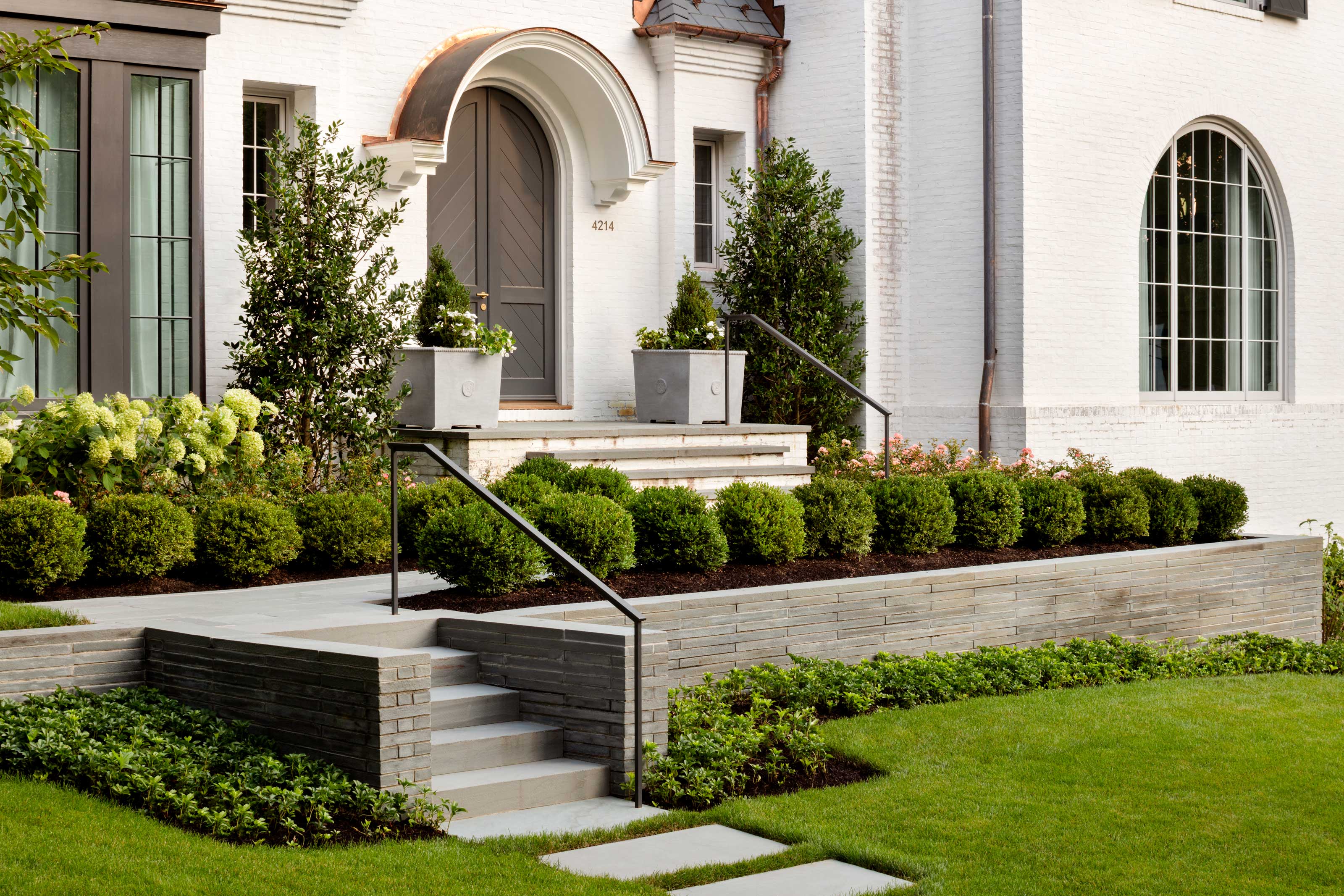
When it comes to curb appeal, the right tree will make all the difference for a front yard. It introduces something of scale, and something that brings interest through form, color, texture and more.
'A beautiful large specimen tree can really anchor a front garden,' says landscaper designer Patricia Benner of Benner Landscape Design. 'It can be evergreen or deciduous, but ones that develop specimen quality structure over time really make a statement for the property.'
So what is the best tree to pick for a front yard? We asked landscape designers to tell us their favorite picks for front yard landscaping.
8 of the best trees for front yards
In reality, the best trees for front yards will depend on the location and aspect of your home. 'Analyze the location where you're considering putting a tree,' suggests landscape designer Joseph Richardson of Richardson & Associates Landscape. 'Consider factors such as the size of the space available (height and width), how many hours a day is it exposed to sunlight and whether it's in wet or dry conditions.'
You should also refer to the USDA plant hardiness zone of your area when tree landscaping. 'Picking the right tree for the space will give you a much better chance for success,' Joseph adds.
1. Olive trees
'My favorites sometimes depend on the home's architectural style,' landscape designer Patricia Benner tells us. It's a good place to start when choosing a tree to narrow down your option.
'Olives are great for Italian, Mediterranean and Spanish style homes,' Patricia suggests. Olive trees like Mediterranean-style climates best, but a spot that gets plenty of sunlight but is also sheltered will be the best type of front yard for these casually elegant trees.
They're a great choice for pots if you're looking at container gardening, but they will eventually outgrow them, and will need to be planted in the ground after a time, though this may be after many years.
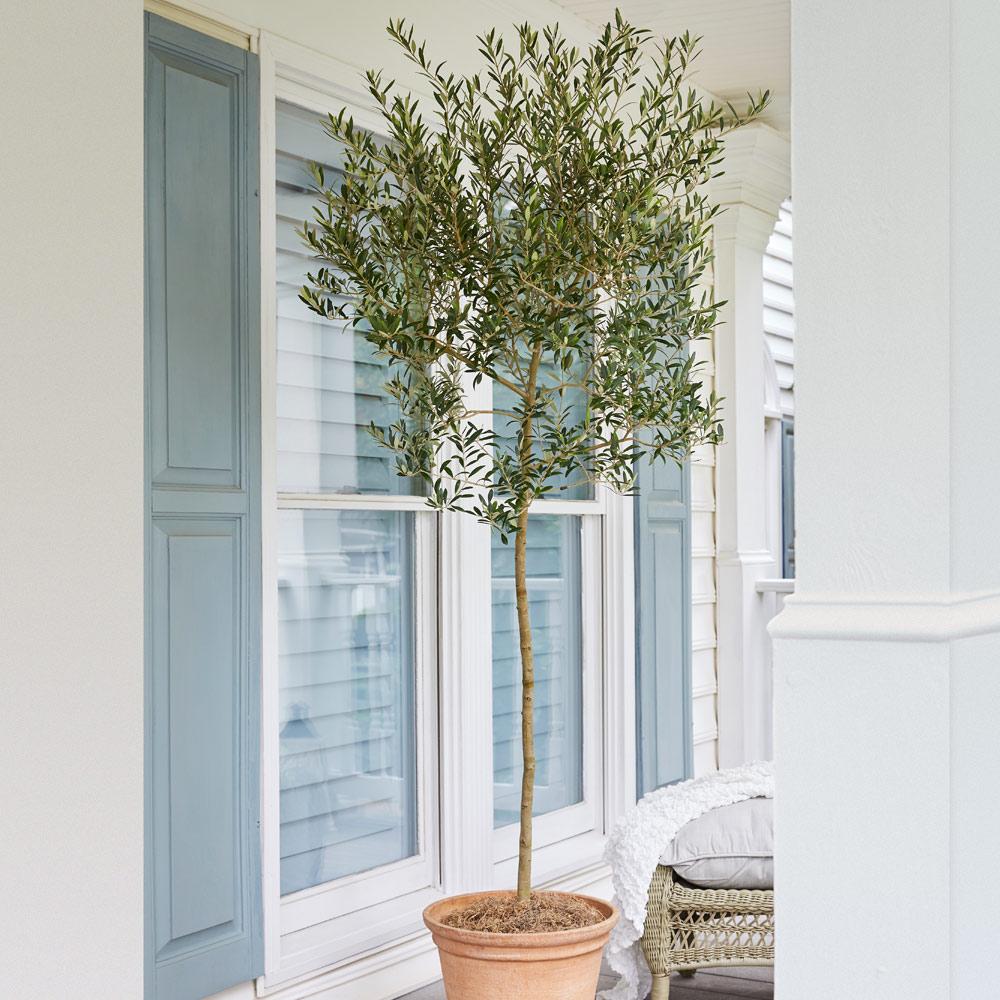
2. Sycamore
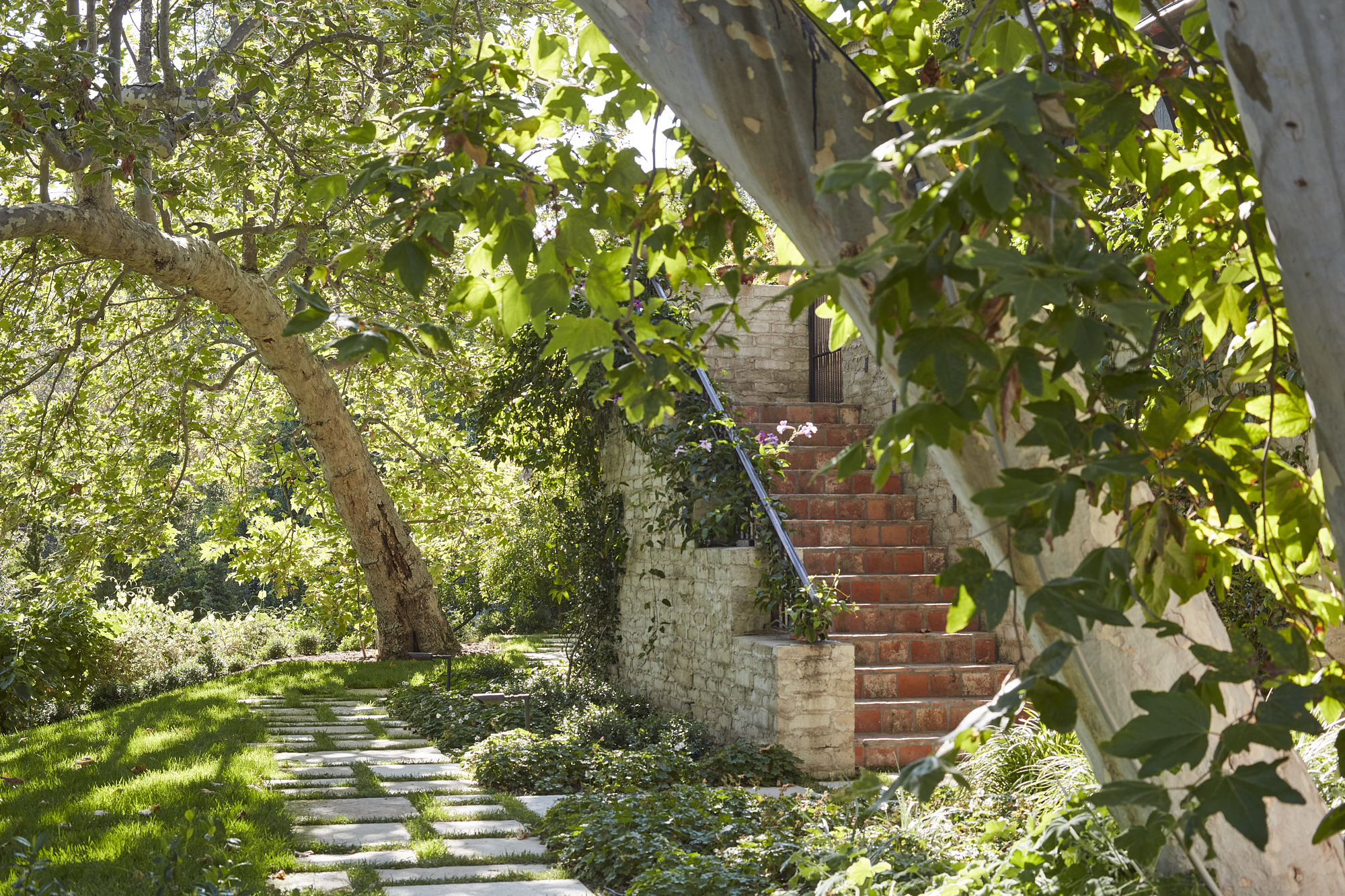
So what's the perfect tree for a mid-century home? 'I love California Sycamores with mid-century homes,' Patricia explains. 'Their sinuous form and heft contrast nicely with the simple lines and planes of the modernist home.'
The American sycamore is a fast-growing tree, growing up to two feet a year, which can help it establish some real presence for your modern front garden quickly. However, landscapers warn not to plant a sycamore too close to your home or to the sidewalk, as its roots can disrupt foundations, water lines and more.
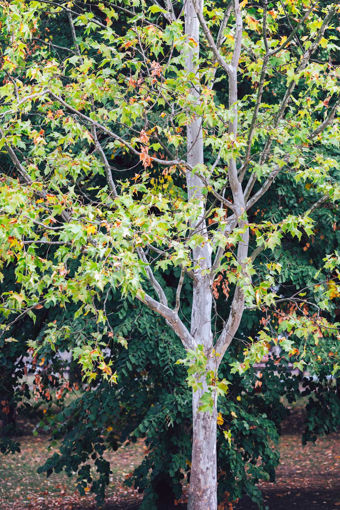
3. Magnolia
Deciduous trees may drop their leaves during fall, meaning bare branches and adding raking leaves to your chore list, however, they can be truly worth it for beautiful spring curb appeal, even if short-lived.
'My favorite flowering tree is a saucer magnolia (magnolia x soulangeana) because it blooms in early Spring,' says Joseph Richardson. 'With light pink, cup-shaped flowers, anytime I get the opportunity to plant one on a project I do.'
4. Chinese elms
Chinese elms are one of the trees for front yards that landscape designer Mike Lucas of Lucas & Lucas loves, though 'in terms of front yard use, it depends on the situation and the style of the home and ultimately the direction the place is facing,' he says.
The Chinese elm has a grey-green bark, that 'peels' away as it ages, creating a beautifully textured trunk. It's semi-deciduous, but will keep its leaves in milder climates while turning yellow and pink in the fall, and blooms with small flowers during the springtime.

5. Chionanthus retusus
Chionanthus Retusus is another favorite of landscape designer Mike Lucas - a tree sometimes called Chinese Fringe tree for its fringe-like flowers that bloom towards the end of spring.
It's also pretty easy to grow. It can thrive in full sun to a partially shady garden, isn't fussy when it comes to soil and isn't really affected by insects and pests. It's a slower-growing tree, so you may need to invest in a more mature tree if you're looking for instant curb appeal, but that does mean less maintenance further down the road.
6. Plum trees
If you're looking for a tree that offers seasonal blossom as an alternative to the magnolia or cherry blossom, have you considered the plum tree? 'It’s spring and I absolutely love seeing all the plums in bloom right now - the sight of blossoms on bare branches always melts my heart,' says Megumi Aihara (ASLA, PLA), founding partner and principal of architecture and landscape studio SAW. 'A tree with great seasonality - brilliant fall color or spring blooms - will always make a bold statement for a front yard.'

7. Japanese maple
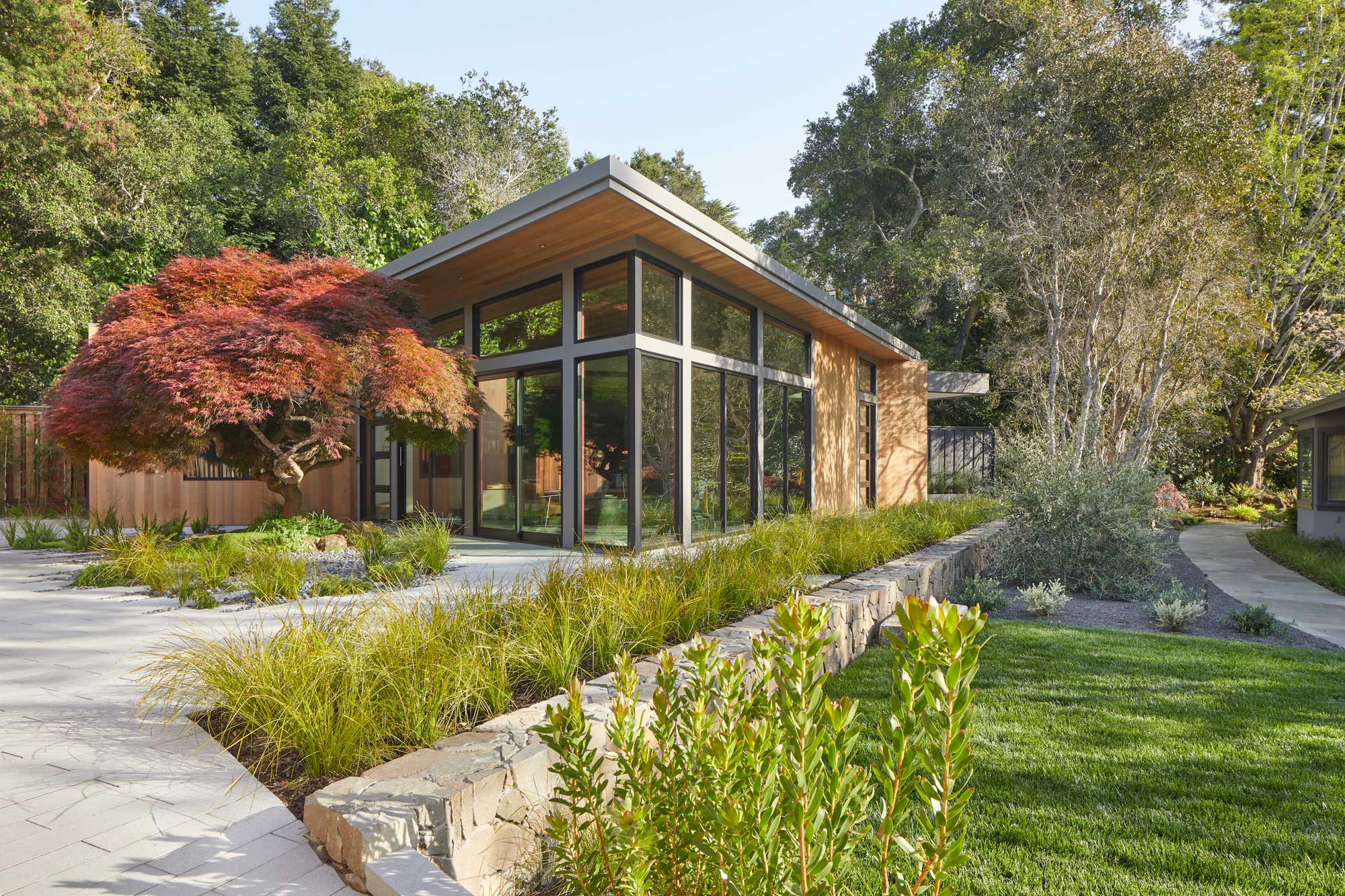
'Japanese maples are one of my favorites trees - they look great in every season and can be pruned to stay a desired size,' Megumi tells us. Plus, there's a choice for every type of home, whether you like the idea of a Japanese garden or not. 'There are so many kinds to choose from - you can select based on summer foliage, fall color, leaf shape, bark color, and branching form.'
The one drawback of a Japanese maple when it comes to creating curb appeal? 'Most species grow slowly so it’s best to get as large a tree as possible to start,' Megumi says.
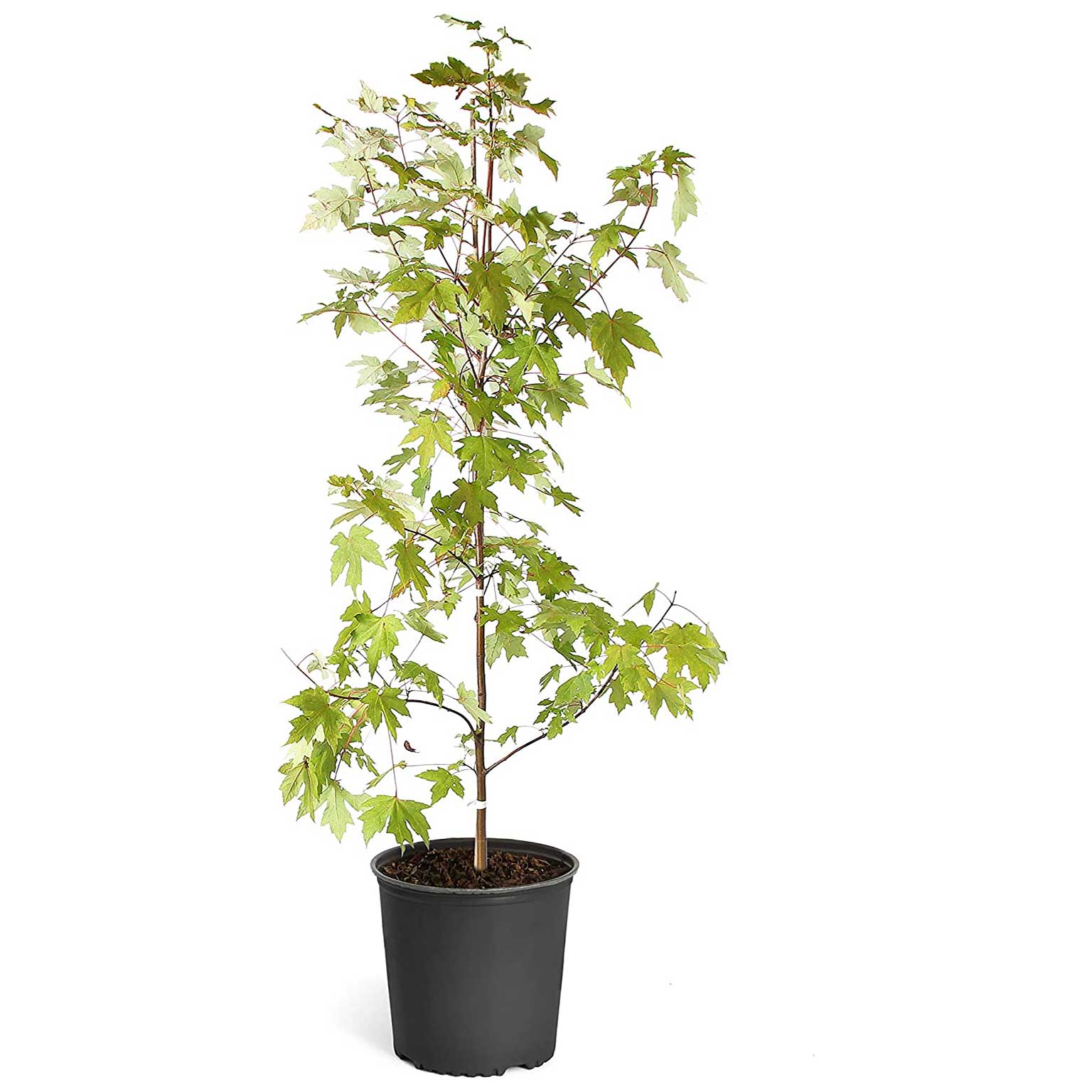
8. Strawberry tree
Sometimes the best trees for front yards and the best trees for privacy are both needed for your landscaping, but in this instance, your tree choices don't have to be boring.
'If you need an evergreen tree for screening or other privacy concerns, you can find trees with sculptural branching for a different kind of garden highlight,' Megumi suggests. 'A multi-stem strawberry tree or olive tree could present a beautiful image for a front yard.'
Strawberry trees don't grow actual strawberries you'll be surprised to find out, but a round, relatively bland fruit that you may not enjoy, but birds certainly do.

How do I create curb appeal with trees in my front yard?
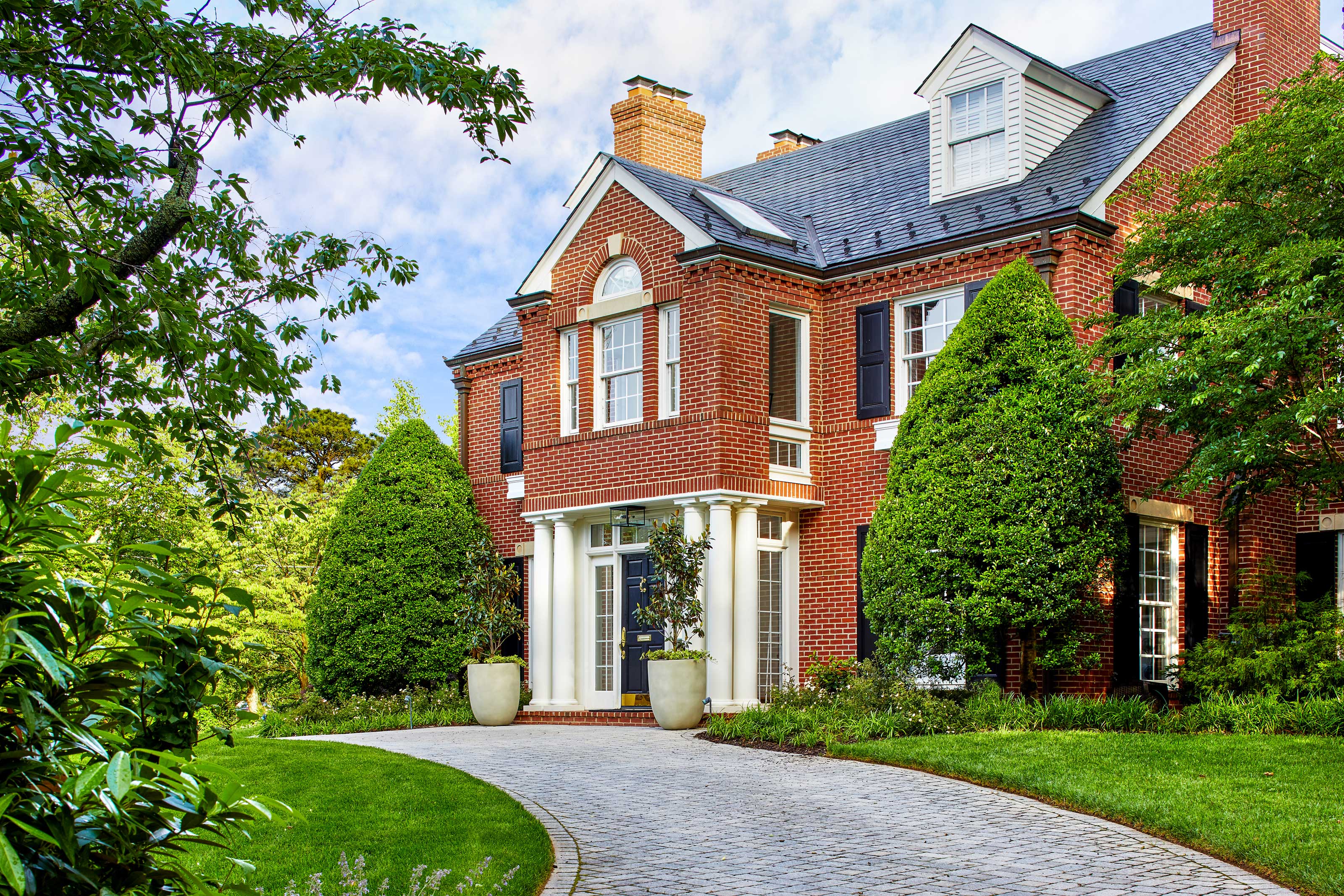
So you've chosen the tree for your front yard - now how do you make it look good? 'Curb appeal is really in the layout and what we are creating overall,' explains landscape designer Mike Lucas. This comes down to how you combine trees, shrubs and plants to create your overall landscape design.
'Scale and form of the tree are important things to consider,' adds landscape designer Joseph Richardson. 'And small tree next to a big house is going to look undersized, and vice versa.' Sometimes, a large mature tree can be all you need to anchor your front yard, but if you're using smaller trees, building up denser foliage with complementary planting, even underplanting if you have trees in pots, can help a scheme look more luxurious.
You should also consider how you combine deciduous and evergreen trees. 'To introduce flowering or leaf color, it often requires going with a deciduous tree since most such trees are deciduous,' Patricia Benner says. ' In my view, traditional homes look great with a mix of evergreens and trees that bring seasonal interest.'







